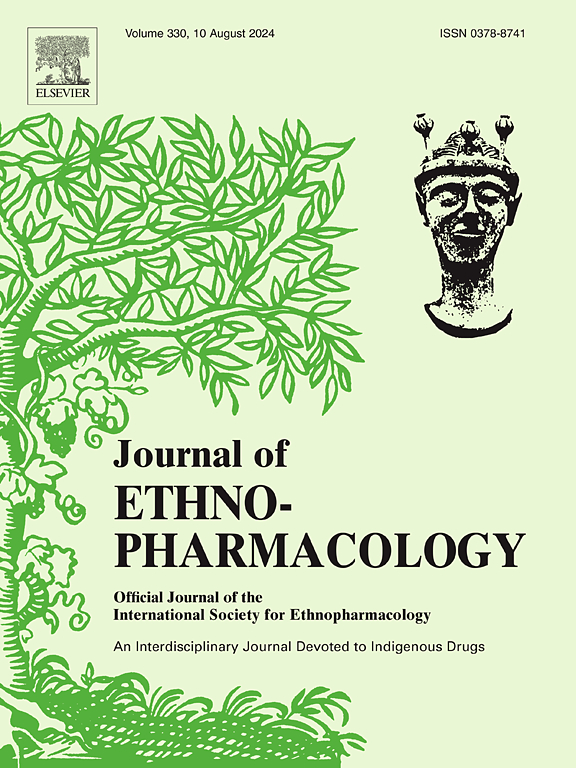传统草药 Pithecellobium clypearia (Jack) Benth:化学成分和药理活性研究进展。
IF 4.8
2区 医学
Q1 CHEMISTRY, MEDICINAL
引用次数: 0
摘要
本文章由计算机程序翻译,如有差异,请以英文原文为准。

Traditional Herbal Medicine Pithecellobium clypearia (Jack) Benth: Research progress in chemical constituents and pharmacological activities
Ethnopharmacological relevance
Pithecellobium clypearia, a traditional herbal medicine, has garnered widespread attention for its significant anti-infective benefits. However, there is currently a lack of comprehensive reviews examining the chemical constituents and pharmacological activities of P. clypearia.
Aims of the study
This review aims to investigate the chemical constituents and pharmacological effects of P. clypearia, and to explore its potential for wider medical applications through the synthesis of these findings.
Materials and methods
The Web of Science, PubMed, CNKI, Google Scholar, and WanFang databases were searched for Pithecellobium clypearia, Using “Pithecellobium clypearia”, “Archidendron clypearia”, “pharmacology”, “chemical composition” and “biological activity”, as the keywords, we summarized the main chemical compositions and pathological mechanisms of P. clypearia.
Results
A total of 129 compounds were isolated from P. clypearia, the primary active components identified include flavonoids, polysaccharides, lignins, triterpenoids, steroids, and phenolic acids. These compounds contribute to the medicinal plant's diverse pharmacological effects, which include antiviral, antibacterial, anti-inflammatory, antioxidant, and neuroprotective properties. P. clypearia presents great potential, especially in its antiviral and anti-inflammatory effects, indicating its valuable role in future therapeutic strategies.
Conclusion
P. clypearia has demonstrated effectiveness and safety in treating various respiratory and gastrointestinal diseases. It shows good monotherapy efficacy and significantly enhances overall treatment outcomes when used in combination therapy. P. clypearia is a valuable treatment option for patients of different age groups and provides a safe and effective alternative in various clinical settings.
求助全文
通过发布文献求助,成功后即可免费获取论文全文。
去求助
来源期刊

Journal of ethnopharmacology
医学-全科医学与补充医学
CiteScore
10.30
自引率
5.60%
发文量
967
审稿时长
77 days
期刊介绍:
The Journal of Ethnopharmacology is dedicated to the exchange of information and understandings about people''s use of plants, fungi, animals, microorganisms and minerals and their biological and pharmacological effects based on the principles established through international conventions. Early people confronted with illness and disease, discovered a wealth of useful therapeutic agents in the plant and animal kingdoms. The empirical knowledge of these medicinal substances and their toxic potential was passed on by oral tradition and sometimes recorded in herbals and other texts on materia medica. Many valuable drugs of today (e.g., atropine, ephedrine, tubocurarine, digoxin, reserpine) came into use through the study of indigenous remedies. Chemists continue to use plant-derived drugs (e.g., morphine, taxol, physostigmine, quinidine, emetine) as prototypes in their attempts to develop more effective and less toxic medicinals.
 求助内容:
求助内容: 应助结果提醒方式:
应助结果提醒方式:


